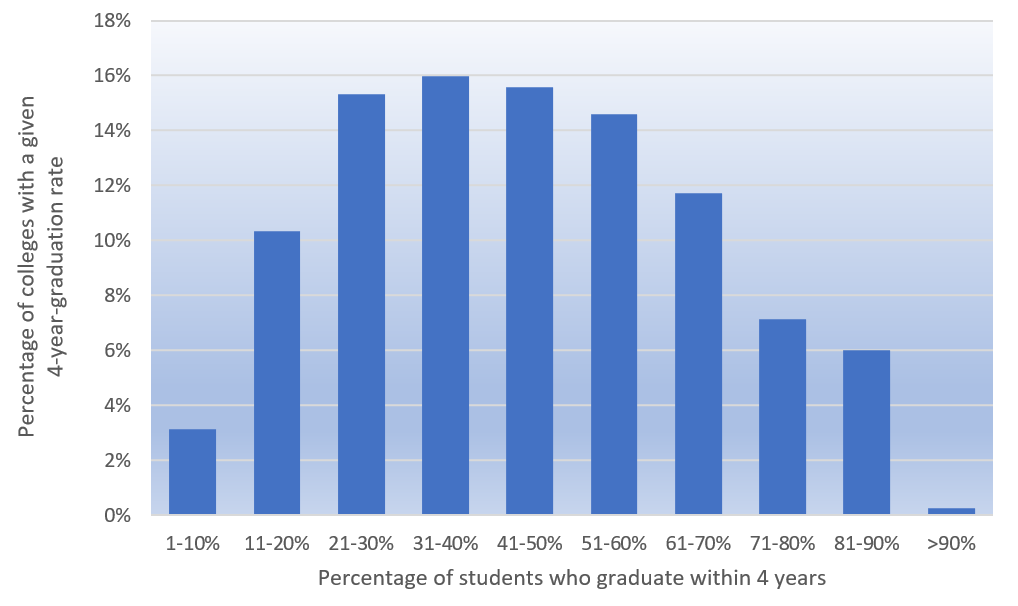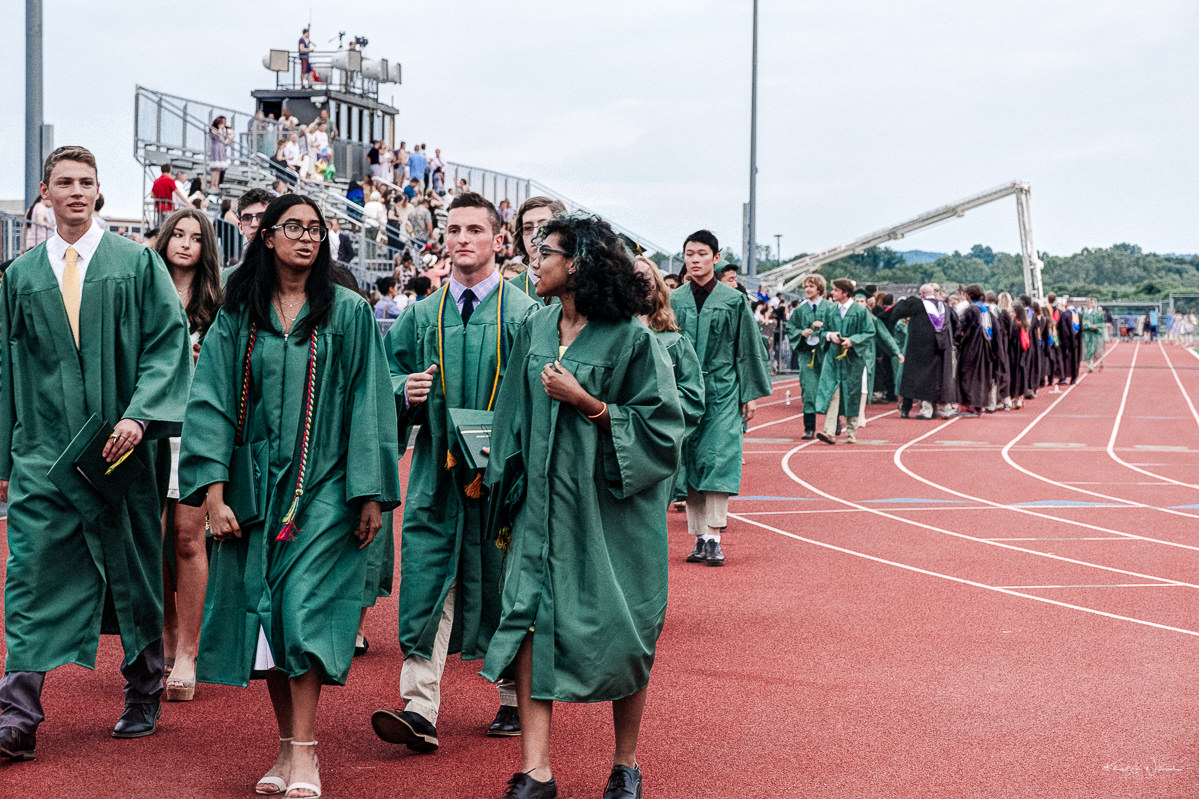Not only is it not easy to apply to a university in the United States, it’s not easy to graduate either. With acceptance rates in the top 20 universities in the U.S. in the low single digits, participation in national competitions, experience in club activities, and publication in journals can be considered almost mandatory for application. As for grades, a near-perfect GPA and an SAT score of at least 1550 are also musts. And every year the application requirements become more difficult. College admission isn’t going to be easy either, with all the group work, classroom presentations, and tests that come with it. Since it is hard to apply to the school, the learning process is still so hard, it must be successfully graduated in order to afford your own efforts. Today we will take a look at a few universities in the United States with highest graduation rates.
College Graduation in US
The National Center for Education Statistics has compiled 4-year graduation rates and 6-year graduation rates for each university since 2016. The top five and bottom five colleges are listed here for graduation rate reference. The school with the highest graduation rate is Duke University, and the university with the lowest rate is Northeastern University.
| Name | US News Ranking | Four-year graduation rate/% | Six-year graduation rate/% |
|---|---|---|---|
| Duke University | 7 | 91 | 97 |
| University of Notre Dame | 20 | 91 | 96 |
| Georgetown University | 22 | 91 | 96 |
| University of Virginia | 24 | 91 | 95 |
| Princeton University | 24 | 91 | 95 |
| Illinois Institute of Technology | 98 | 38 | 75 |
| Drexel University | 98 | 31 | 78 |
| Rochester Institute of Technology | 98 | 29 | 74 |
| University at Buffalo-SUNY | 76 | 24 | 36 |
| Northeastern University | 53 | / | 91 |
The Student Right-to-Know Act of 1990 requires U.S. colleges to report to the National Center for Education Statistics (NCES) the percentage of graduates who graduate in the normal time frame, usually four and six years.
The U.S. college graduation rate is calculated as follows:
Four-year graduation rate = (number of graduates within four years) / (number of students enrolled four years ago) x 100%
Six-year graduation rate = (number of graduates within six years)/(number of students enrolled six years ago) x 100%

Factors Affecting Graduation Rate
Student Quality
Top schools attract students with generally high GPAs. Students’ own strong academic skills naturally make it easier for them to persevere in an stressful environment, thus increasing the graduation rate at their schools.

Rigor of Course
Academically challenging polytechnic schools have lower graduation rates because they have more demanding programs and give tougher grades. For example, Carnegie Mellon University has a four-year graduation rate of 76%, and the University of Illinois Urbana-Champaign has a four-year graduation rate as low as 72%.
Financial Assistance Funding
The university is generous to students from low-income families, giving them tuition waivers and living stipends to get them through college. US colleges that offer Need-blind financial aid to international students generally have graduation rates of 80% or higher.
Academic Support
The university cares about learning and growth of its students and equips them with a strong tutoring center, writing center, academic advising, and job search services. Additionally, small class sizes and low student-to-faculty ratios round out the academic experience and effectively increase graduation rates.

What We Know
The average 4-year graduation rate at US colleges is 73%, and the average 6-year graduation rate is 86%.
The better the school, not necessarily the higher the graduation rate
The four-year graduation rate of MIT and the University of Chicago, which are academically more difficult, are 89% and 90% respectively, while Stanford University, which is ranked No. 3 by US News, has a four-year graduation rate of only 73%, and a six-year graduation rate of up to 95%. The low four-year graduation rate may be related to the fact that students enroll in a school and choose to have a gap year soon afterwards, and go back to school to take classes to get a certificate of graduation after 1–2 years. Only if the 4 and 6 years graduation rates are low can they objectively reflect the fact that a school does not have a high graduation rate.
Polytechnics are harder to graduate.
| Name | US News Ranking in Polytechnics | Four-year graduation rate/% | Six-year graduation rate/% |
|---|---|---|---|
| Massachusetts Institute of Technology | 1 | 89 | 95 |
| Cornell University | 13 | 89 | 95 |
| Johns Hopkins University | 14 | 89 | 94 |
| Columbia University | 17 | 88 | 94 |
| Northwestern University | 17 | 87 | 97 |
Despite the difficulty of graduating from polytechnic schools, salaries and career advancement after graduation can be substantial. Data from Georgetown University’s Center on Education and Labor shows that STEM majors at US universities earn an average of $3.4 million more over their lifetimes than graduates of the lowest-paid majors.

Conclusion
Colleges with highest graduation rate should be the first choice for prospective students who prioritize academic support, student engagement, and resource allocation. Not only do these colleges provide an environment conducive to student success, but they also have a proven track record of preparing graduates with the skills and knowledge needed for their future careers. However, it is important to note that graduation rates should not be the sole determining factor in choosing a college. Students must also consider factors such as program offerings, campus culture, financial aid, and personal aspirations. By weighing all of these factors, prospective students can make an informed decision and find the college that best suits their educational needs and desires.
FAQ
What is the 4-year graduation rate at Harvard?
The 4-year graduation rate in Harvard University is 86%, which is within the top 5% among American universities. What’s more, the 6-year graduation rate is 97%, which also is within the top 5%.
Are college graduation rates declining?
This depends on specific circumstances. The six-year graduation rate for pupils of normal school age has slightly declined. 68.6% for pupils under 20 years of age and 58.8% for pupils between 20 and 24 years of age, while the rate for pupils over 24 years of age has stabilized at 56.3%.
What 4-year college has the lowest graduation rate?
Within the more than 3,000 colleges and universities in the United States, Western International University tops the list with a 3% graduation rate. The graduation rate is the percentage of students who graduate within 150% of the normal expected time to complete a degree.








